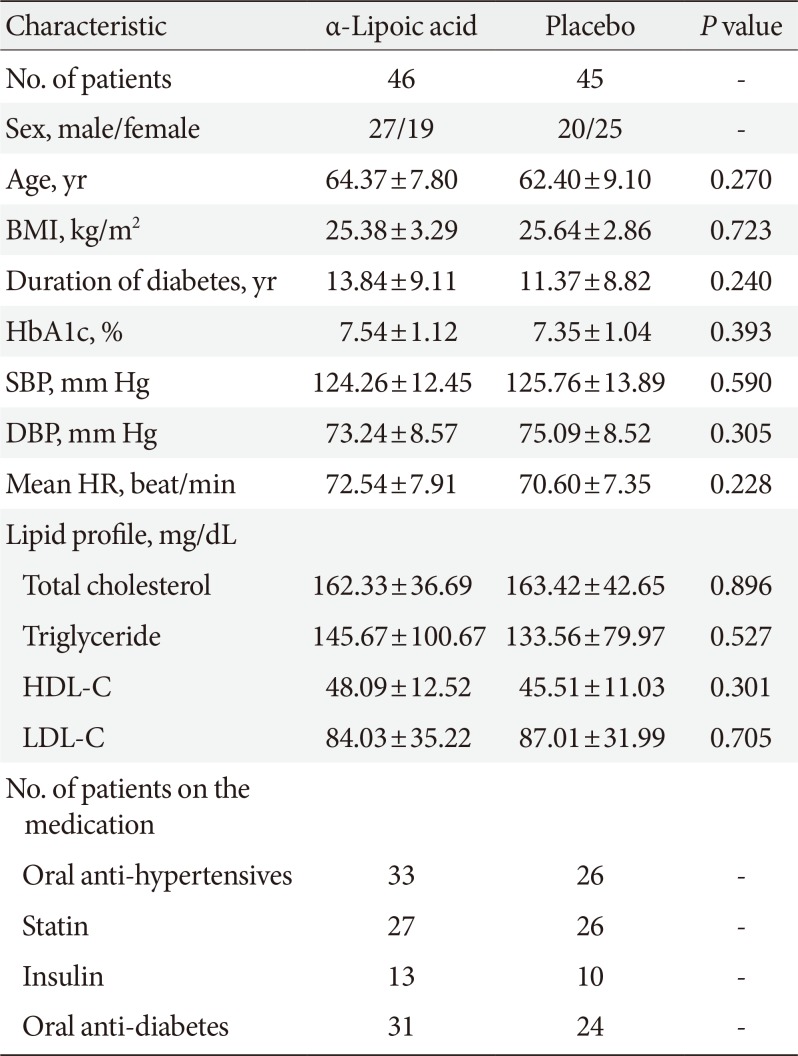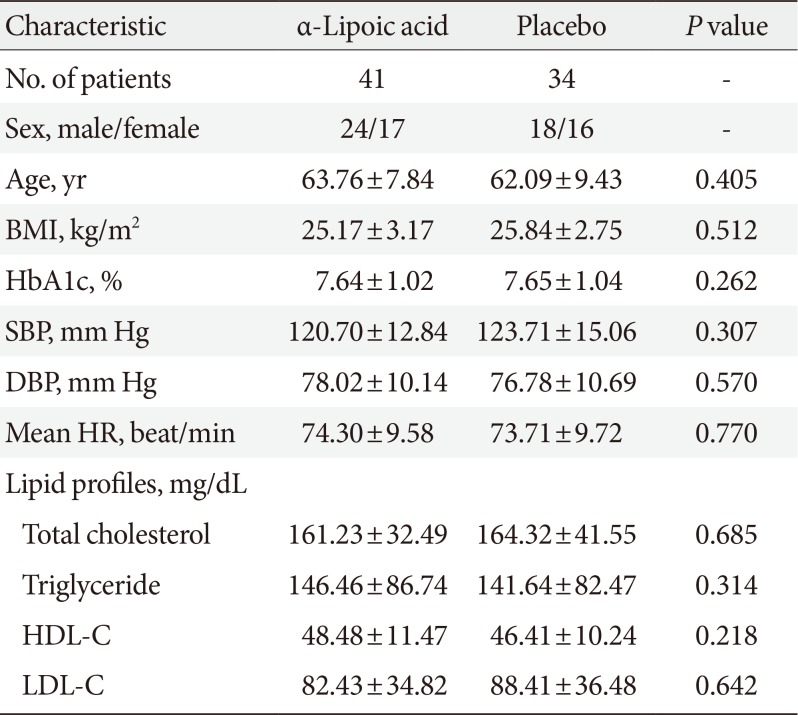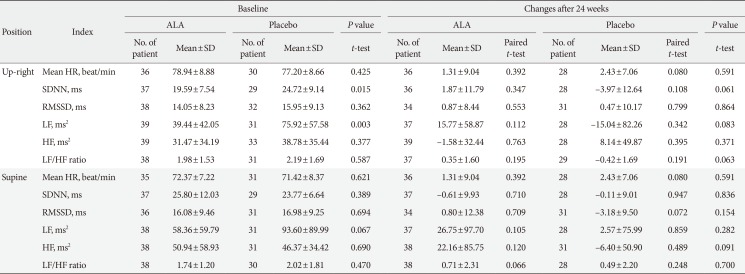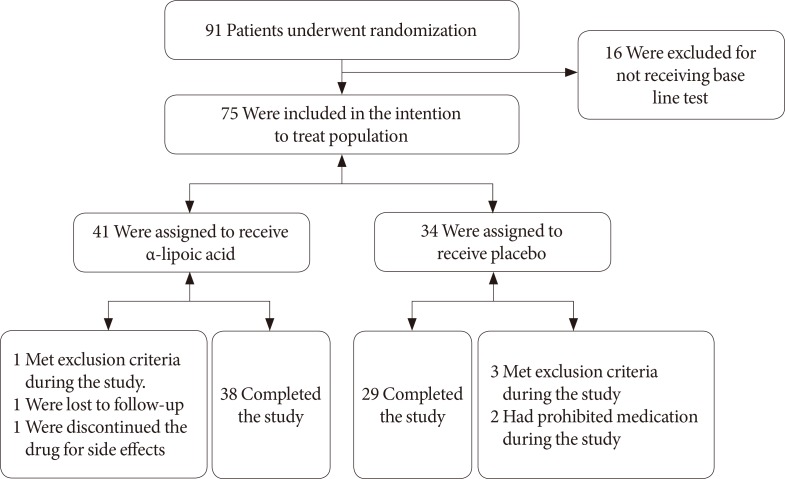1. Pop-Busui R. Cardiac autonomic neuropathy in diabetes: a clinical perspective. Diabetes Care. 2010; 33:434–441. PMID:
20103559.
2. Orchard TJ, LLoyd CE, Maser RE, Kuller LH. Why does diabetic autonomic neuropathy predict IDDM mortality? An analysis from the Pittsburgh Epidemiology of Diabetes Complications Study. Diabetes Res Clin Pract. 1996; 34:S165–S171. PMID:
9015687.

3. Lee KH, Jang HJ, Kim YH, Lee EJ, Choe YS, Choi Y, Lee MG, Lee SH, Kim BT. Prognostic value of cardiac autonomic neuropathy independent and incremental to perfusion defects in patients with diabetes and suspected coronary artery disease. Am J Cardiol. 2003; 92:1458–1461. PMID:
14675587.

4. Astrup AS, Tarnow L, Rossing P, Hansen BV, Hilsted J, Parving HH. Cardiac autonomic neuropathy predicts cardiovascular morbidity and mortality in type 1 diabetic patients with diabetic nephropathy. Diabetes Care. 2006; 29:334–339. PMID:
16443883.

5. Gerritsen J, Dekker JM, TenVoorde BJ, Kostense PJ, Heine RJ, Bouter LM, Heethaar RM, Stehouwer CD. Impaired autonomic function is associated with increased mortality, especially in subjects with diabetes, hypertension, or a history of cardiovascular disease: the Hoorn Study. Diabetes Care. 2001; 24:1793–1798. PMID:
11574444.
6. Mustonen J, Uusitupa M, Lansimies E, Vainio P, Laakso M, Pyorala K. Autonomic nervous function and its relationship to cardiac performance in middle-aged diabetic patients without clinically evident cardiovascular disease. J Intern Med. 1992; 232:65–72. PMID:
1640194.

7. Didangelos TP, Arsos GA, Karamitsos DT, Athyros VG, Karatzas ND. Left ventricular systolic and diastolic function in normotensive type 1 diabetic patients with or without autonomic neuropathy: a radionuclide ventriculography study. Diabetes Care. 2003; 26:1955–1960. PMID:
12832295.
8. Kahn JK, Zola B, Juni JE, Vinik AI. Radionuclide assessment of left ventricular diastolic filling in diabetes mellitus with and without cardiac autonomic neuropathy. J Am Coll Cardiol. 1986; 7:1303–1309. PMID:
3011872.

9. Kahn JK, Sisson JC, Vinik AI. Prediction of sudden cardiac death in diabetic autonomic neuropathy. J Nucl Med. 1988; 29:1605–1606. PMID:
3411377.
10. Stevens MJ, Dayanikli F, Raffel DM, Allman KC, Sandford T, Feldman EL, Wieland DM, Corbett J, Schwaiger M. Scintigraphic assessment of regionalized defects in myocardial sympathetic innervation and blood flow regulation in diabetic patients with autonomic neuropathy. J Am Coll Cardiol. 1998; 31:1575–1584. PMID:
9626837.

11. Kataoka M, Ito C, Sasaki H, Yamane K, Kohno N. Low heart rate variability is a risk factor for sudden cardiac death in type 2 diabetes. Diabetes Res Clin Pract. 2004; 64:51–58. PMID:
15036827.

12. Dimitropoulos G, Tahrani AA, Stevens MJ. Cardiac autonomic neuropathy in patients with diabetes mellitus. World J Diabetes. 2014; 5:17–39. PMID:
24567799.

13. Ko SH, Kwon HS, Lee JM, Kim SR, Cho JH, Yoo KD, Park YM, Lee WC, Song KH, Yoon KH, Cha BY, Son HY, Ahn YB. Cardiovascular autonomic neuropathy in patients with type 2 diabetes mellitus. J Korean Diabetes Assoc. 2006; 30:226–235.

14. Kasper DL, Fauci AS, Hauser SL, Longo DL, Jameson JL, Loscalzo J. Chapter 419, Diabetes mellitus: complications. Harrison's principles of internal medicine. 19th ed. New York: McGraw-Hill;2015. p. 2426–2427.
15. The Diabetes Control and Complications Trial Research Group. The effect of intensive diabetes therapy on the development and progression of neuropathy. Ann Intern Med. 1995; 122:561–568. PMID:
7887548.
16. Ziegler D, Schatz H, Conrad F, Gries FA, Ulrich H, Reichel G. Deutsche Kardiale Autonome Neuropathie. Effects of treatment with the antioxidant alpha-lipoic acid on cardiac autonomic neuropathy in NIDDM patients. A 4-month randomized controlled multicenter trial (DEKAN Study). Diabetes Care. 1997; 20:369–373. PMID:
9051389.
17. Spallone V, Ziegler D, Freeman R, Bernardi L, Frontoni S, Pop-Busui R, Stevens M, Kempler P, Hilsted J, Tesfaye S, Low P, Valensi P. Toronto Consensus Panel on Diabetic Neuropathy. Cardiovascular autonomic neuropathy in diabetes: clinical impact, assessment, diagnosis, and management. Diabetes Metab Res Rev. 2011; 27:639–653. PMID:
21695768.

18. Ewing DJ, Martyn CN, Young RJ, Clarke BF. The value of cardiovascular autonomic function tests: 10 years experience in diabetes. Diabetes Care. 1985; 8:491–498. PMID:
4053936.

19. Task Force of the European Society of Cardiology and the North American Society of Pacing and Electrophysiology. Heart rate variability. Standards of measurement, physiological interpretation, and clinical use. Eur Heart J. 1996; 17:354–381. PMID:
8737210.
20. Kempler P. Autonomic neuropathy: a marker of cardiovascular risk. Br J Diabetes Vasc Dis. 2003; 3:84–90.
21. Ziegler D, Hanefeld M, Ruhnau KJ, Meissner HP, Lobisch M, Schutte K, Gries FA. Treatment of symptomatic diabetic peripheral neuropathy with the anti-oxidant alpha-lipoic acid. A 3-week multicentre randomized controlled trial (ALADIN Study). Diabetologia. 1995; 38:1425–1433. PMID:
8786016.
22. Vinik AI, Maser RE, Mitchell BD, Freeman R. Diabetic autonomic neuropathy. Diabetes Care. 2003; 26:1553–1579. PMID:
12716821.

23. Nagamatsu M, Nickander KK, Schmelzer JD, Raya A, Wittrock DA, Tritschler H, Low PA. Lipoic acid improves nerve blood flow, reduces oxidative stress, and improves distal nerve conduction in experimental diabetic neuropathy. Diabetes Care. 1995; 18:1160–1167. PMID:
7587852.

24. Vinik AI. The conductor of the autonomic orchestra. Front Endocrinol (Lausanne). 2012; 3:71. PMID:
22737143.









 PDF
PDF ePub
ePub Citation
Citation Print
Print





 XML Download
XML Download